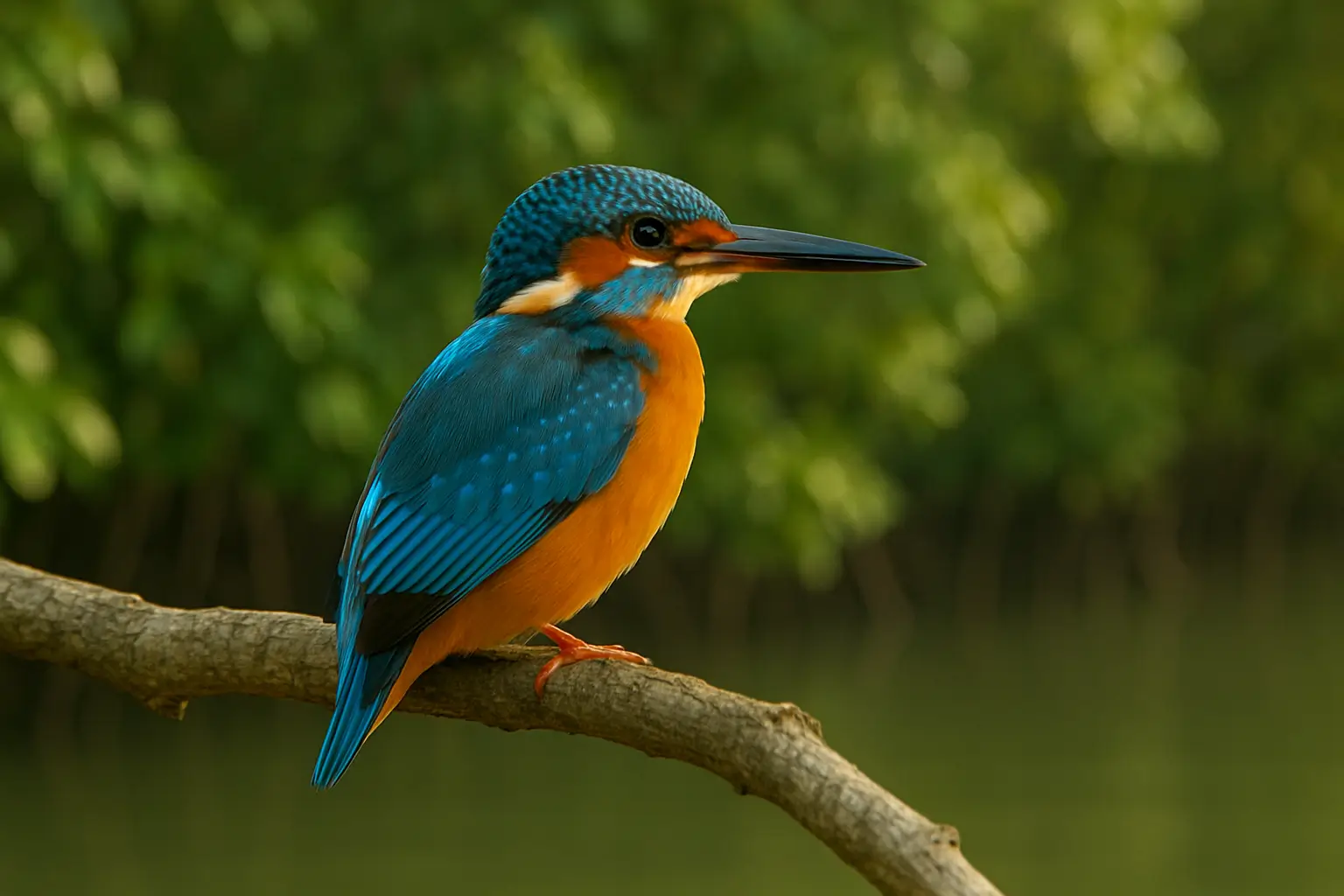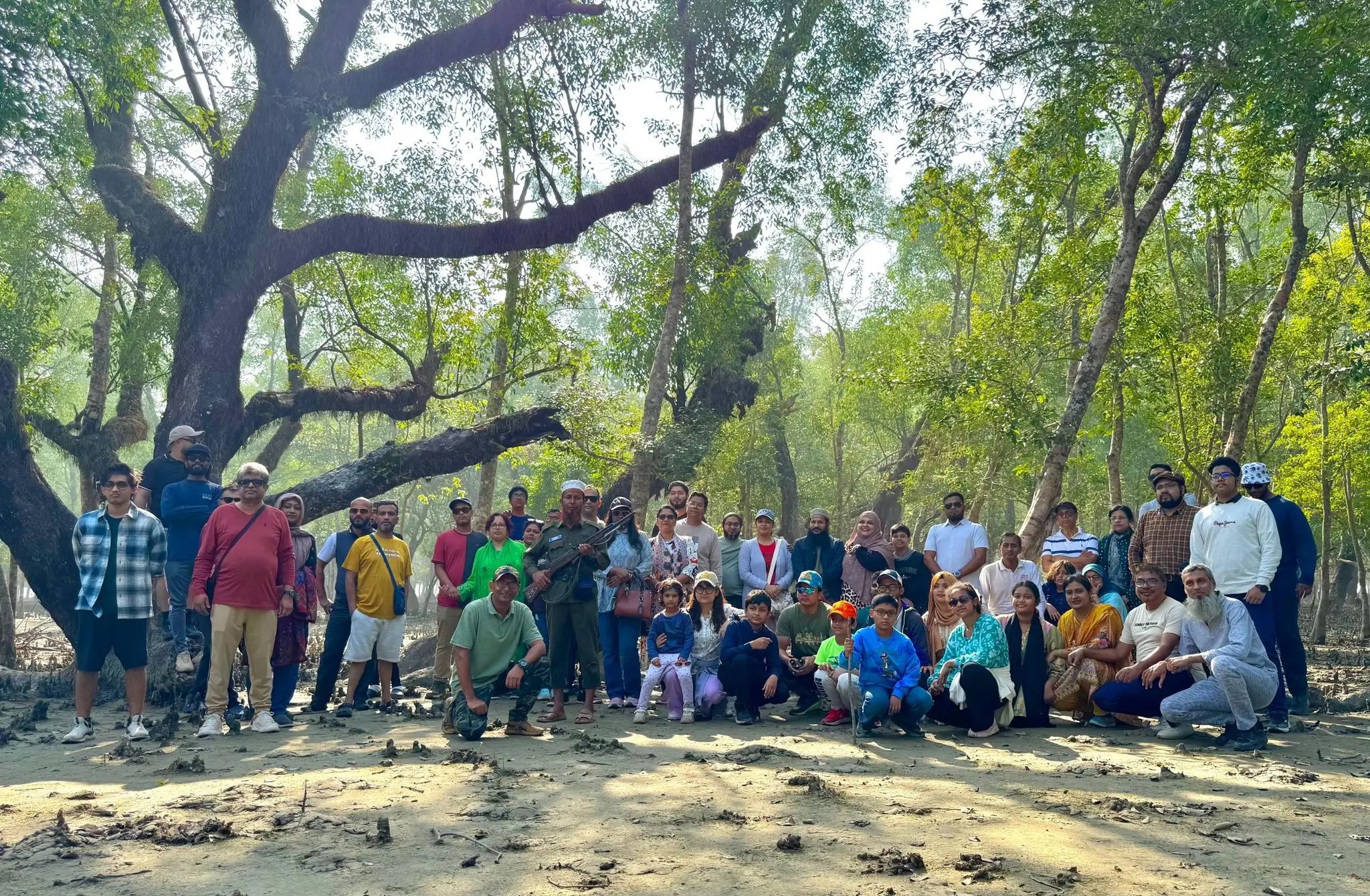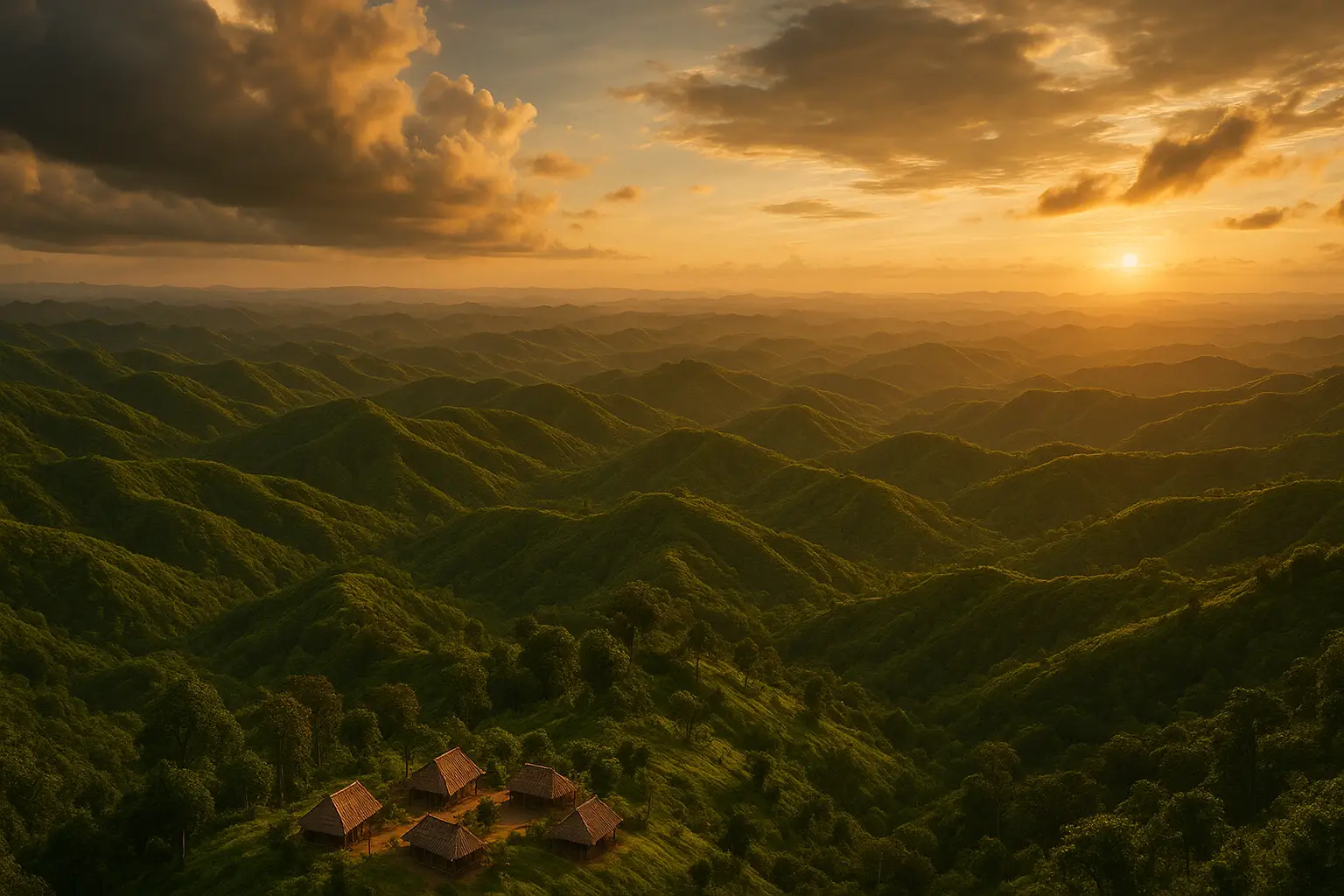The Sundarbans, a UNESCO World Heritage Site stretching across Bangladesh and India, stands as nature’s most magnificent mangrove ecosystem. This pristine wilderness, covering approximately 10,000 square kilometers, offers travelers an unparalleled adventure into one of Earth’s most biodiverse regions. From the elusive Royal Bengal Tiger to countless bird species, the Sundarbans promises an unforgettable journey through untouched natural beauty.
What Makes the Sundarbans Special?
The Sundarbans mangrove forest represents a unique ecosystem where saltwater meets freshwater, creating an environment unlike anywhere else on Earth. This deltaic region, formed by the Ganges, Brahmaputra, and Meghna rivers, hosts an intricate network of tidal waterways, mudflats, and small islands covered in salt-tolerant mangrove forests.
The forest’s name derives from the Sundari trees (Heritiera fomes) that dominate the landscape, though the ecosystem supports over 334 plant species. What truly sets the Sundarbans apart is its remarkable adaptability to tidal changes, with water levels fluctuating up to seven meters twice daily.
Wildlife Wonders of the Sundarbans
The Royal Bengal Tiger
The Sundarbans is home to the world’s largest population of Royal Bengal Tigers, with an estimated 100-150 tigers roaming the Bangladeshi portion of the forest. These magnificent predators have uniquely adapted to the mangrove environment, becoming excellent swimmers and developing a tolerance for saltwater that’s rare among big cats.
Diverse Bird Life
Bird enthusiasts will discover over 315 bird species, including the rare Masked Finfoot, Oriental Darter, and countless species of kingfishers, herons, and eagles. The forest serves as a crucial stopover for migratory birds traveling along the East Asian-Australasian Flyway.
Marine Life
The waterways teem with Irrawaddy dolphins, Ganges river dolphins, and saltwater crocodiles. The mudflats support numerous fish species, crabs, and mollusks that form the foundation of the forest’s food chain.
Best Time to Visit the Sundarbans
The optimal time for Sundarbans tourism is during the dry season from November to March. During these months, the weather remains pleasant with temperatures ranging from 15°C to 25°C, making wildlife spotting more comfortable and rewarding.

November to February: Perfect weather conditions with clear skies and minimal rainfall. This period offers the best wildlife viewing opportunities as animals congregate around water sources.
March to May: Increasingly hot and humid, but still suitable for travel. Early morning and late afternoon excursions provide the most comfortable experience.
June to October: Monsoon season brings heavy rainfall and cyclonic weather, making travel challenging and potentially dangerous.
How to Reach the Sundarbans
From Dhaka
The journey to the Sundarbans typically begins in Dhaka, Bangladesh’s capital. Travelers can reach the forest through several routes:
By Road and Boat: Drive to Mongla Port (approximately 3-4 hours from Dhaka), then take a boat to enter the forest. This is the most popular route for tourists.
Via Bagerhat: Another common route involves traveling to Bagerhat district, then proceeding to Mongla or other entry points.
Organized Tours: Many tour operators offer complete packages including transportation, accommodation, and guided tours, making the journey hassle-free for international visitors.
Accommodation Options in the Sundarbans
Forest Department Rest Houses
The Bangladesh Forest Department operates several rest houses within the forest, offering basic but comfortable accommodation. These facilities provide an authentic experience of staying within the mangrove ecosystem.
Floating Hotels
Luxury boat hotels offer premium accommodation while cruising through the waterways. These vessels provide modern amenities while maintaining close contact with nature.
Eco-Resorts
Several eco-friendly resorts near the forest boundary offer comfortable stays with minimal environmental impact. These establishments often organize guided tours and cultural experiences.
Essential Activities in the Sundarbans
Boat Safaris
The primary way to explore the Sundarbans is through boat safaris. Navigate narrow creeks and wide rivers while spotting wildlife from the water. Early morning and late afternoon safaris offer the best chances for tiger sightings.
Bird Watching
The diverse avian population makes the Sundarbans a paradise for bird watchers. Bring binoculars and a field guide to identify the numerous species inhabiting the forest.
Canopy Walks
Several locations offer elevated walkways through the mangrove canopy, providing unique perspectives of the forest ecosystem and increased chances of wildlife encounters.
Cultural Experiences
Visit local fishing villages to learn about traditional livelihoods and the challenges of living adjacent to the forest. Many communities offer cultural programs showcasing local music, dance, and crafts.
Conservation Efforts and Responsible Tourism
The Sundarbans faces numerous challenges including climate change, rising sea levels, and human encroachment. Visitors can contribute to conservation efforts by:
- Choosing eco-friendly tour operators
- Following all park regulations
- Maintaining safe distances from wildlife
- Avoiding single-use plastics
- Supporting local communities through responsible tourism practices
Planning Your Sundarbans Adventure
What to Pack
- Lightweight, quick-dry clothing in neutral colors
- Waterproof bags for electronics
- Insect repellent and sunscreen
- Binoculars for wildlife viewing
- Camera with extra batteries
- First aid kit
- Comfortable walking shoes
Safety Considerations
- Always travel with licensed guides
- Follow all safety instructions during boat rides
- Respect wildlife viewing distances
- Inform someone of your travel plans
- Carry emergency contact information

The Sundarbans Experience
A journey through the Sundarbans offers more than just wildlife viewing; it provides a profound connection with one of Earth’s most pristine ecosystems. The forest’s mysterious beauty, combined with the thrill of potentially spotting a Royal Bengal Tiger, creates memories that last a lifetime.
The constant rhythm of tides, the calls of exotic birds, and the gentle lapping of water against mangrove roots create a symphony of nature that soothes the soul. Whether you’re a wildlife photographer, nature lover, or adventure seeker, the Sundarbans delivers an experience that exceeds expectations.
Conclusion
The Sundarbans represents a natural treasure that demands both exploration and protection. This magnificent mangrove forest offers travelers an opportunity to witness the incredible adaptability of life in one of Earth’s most challenging environments. From the iconic Royal Bengal Tiger to the intricate web of life supported by the mangrove ecosystem, every moment in the Sundarbans reveals new wonders.
Planning your visit to the Sundarbans requires careful consideration of timing, logistics, and environmental responsibility. However, the rewards of experiencing this unique ecosystem firsthand make every effort worthwhile. The Sundarbans doesn’t just offer a vacation; it provides a transformative journey into the heart of nature’s most resilient ecosystem.
Frequently Asked Questions (FAQs)
1. What is the best time to visit the Sundarbans for tiger spotting?
The best time for tiger spotting in the Sundarbans is during the dry season from November to March, particularly in the early morning and late afternoon hours. During this period, tigers are more likely to come to the water’s edge, and the pleasant weather conditions make extended boat safaris more comfortable. The reduced water levels also concentrate wildlife around remaining water sources, increasing your chances of sightings.
2. How many days should I spend in the Sundarbans?
A minimum of 2-3 days is recommended to fully experience the Sundarbans. This allows time for multiple boat safaris, wildlife viewing, bird watching, and exploring different areas of the forest. Many visitors find that a 3-4 day trip provides the perfect balance of adventure and relaxation, giving them multiple opportunities to spot tigers and other wildlife while not feeling rushed.
3. Is it safe to visit the Sundarbans, and what precautions should I take?
Yes, visiting the Sundarbans is generally safe when proper precautions are followed. Always travel with licensed guides and reputable tour operators, maintain safe distances from wildlife, follow all park regulations, and stay on designated paths. The biggest risks include boat accidents, wildlife encounters, and getting lost in the maze of waterways, which is why professional guides are essential for a safe experience.
4. What should I expect to pay for a Sundarbans tour?
Sundarbans tour costs vary significantly based on accommodation type, duration, and group size. Budget tours typically range from $50-100 per person per day, while luxury floating hotel experiences can cost $200-400 per person per day. Prices usually include accommodation, meals, boat transportation, guide services, and park entry fees. Booking through reputable local operators often provides better value than international tour companies.
5. Can I visit the Sundarbans without a guide, and what permits do I need?
No, independent visits to the Sundarbans are not permitted for safety and conservation reasons. All visitors must be accompanied by licensed guides and travel with authorized tour operators. You’ll need to obtain permits from the Bangladesh Forest Department, which your tour operator typically arranges. These permits include entry fees and are required for all visitors, both domestic and international. The permit system helps manage visitor numbers and ensures proper supervision in this sensitive ecosystem.











Comments